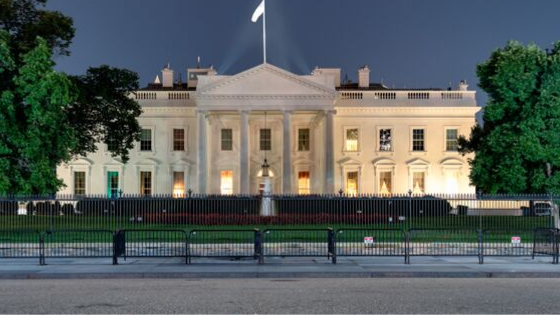Editor’s note: Greg Autry is a member of CPA’s Advisory Board.
On the morning after the 2016 presidential election, CNBC interviewed Peter Navarro, who had been an economic adviser to the Trump campaign and would soon join the administration to advise the president on trade and manufacturing policy. Navarro outlined President Trump’s economic plans: cutting taxes, reducing regulation, cutting energy costs and reforming trade. He predicted strong growth and a Dow moving past 25,000 based on these pro-growth policies.
[Greg Autry | September 20, 2019 | LA Times]
The Trump administration has delivered on every one of those things, but you’d never know that from the mainstream media. Today, it’s hard to turn on the financial news, open a business paper or browse an investment website without seeing some doomsayer predicting the impending collapse of the U.S. economy and equity markets because of the latest tariff or presidential tweet. When the markets invariably resume their upward trends the next day, it’s crickets.
With each drop, tariffs are blamed, and sometimes, the blame is more specifically laid at the feet of Navarro, who has been a chief architect of the president’s trade policies. As the economy hummed along, with historically low unemployment, the Wall Street Journal recently suggested we might see a “Navarro recession.”
We’ve also heard the constant refrain that the tariff burden is borne by American consumers. In fact, while economists differ on the effects of the tariffs, there is considerable evidence that they are having the desired effect. Modeling by European economists Benedikt Zoller-Rydzek and Gabriel Felbermayr concluded that, although U.S. consumer prices for affected Chinese products will rise by about 4.5%, Chinese firms will pay approximately 75% of the tariff burden. And as of the end of August, the treasury had collected more than $25 billion in tariffs from China.
Another benefit of the tariffs has been that many U.S. manufacturers are diversifying their supply chains, moving production out of China. While this is not cost-free for companies, they are making a worthy investment that will ultimately make the global economy far more competitive and resilient. The promising speed at which this is happening must terrify the Politburo in Beijing.
Most economists and business scholars in the 1990s bought into the promise of globalism. But by the mid-2000s, a few of us were skeptical of the way things were playing out, realizing that China had no intention of enacting the structural reforms required for WTO compliance. In 2011, Navarro and I wrote “Death by China,” to expose the predatory process underlying the offshoring of global manufacturing to China. The book laid out how China was obtaining the foreign expertise and capital it required by forcing technology transfer, stealing intellectual property, debasing the country’s environment, exploiting labor, and eroding the purchasing power of Chinese consumers.
While China’s actions enhanced the profits of large, multinational corporations, American workers and small U.S. firms took it on the chin. Meanwhile, millions of rural Chinese were pushed into a Dickensian nightmare of 16-hour workdays in some of the world’s most polluted cities for the benefit of China’s privileged elite. Worse, economic engagement was failing to liberalize China’s Communist Party; they were using their newfound wealth to fortify a repressive police state and build an increasingly aggressive military.
Seeing this unfolding chess game, a small coalition of economists and business leaders worked to build political support for trade reform. Our efforts were rewarded with growing bipartisan awareness of the China problem in Congress and finally the election of Trump, whose refreshing honesty on China ripped away the emperor’s imaginary clothing.
The administration is the first to fully recognize that globalization hasn’t delivered for Americans and that China is an existential threat. Moving from awareness to action is now a global challenge. American firms are on notice that the U.S. government once again sees American workers and national security as top priorities in its dealings with China. And the administration has drawn a clear line in the sand for China, requiring it to embrace global norms and structural reforms that would lead to mutually beneficial trade.
Whenever the next recession invariably arrives — and it looks years away — it won’t have been the administration’s trade policies that caused it.
Greg Autry is an assistant professor of clinical entrepreneurship in the Marshall School of Business at USC. He is the coauthor, with Peter Navarro, of “Death by China” and a member of the Advisory Board at the Coalition for a Prosperous America.
Read the original article here.













